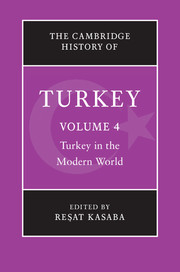3 - The reign of Abdülhamid II
from PART I - OTTOMAN BACKGROUND AND TRANSITION
Published online by Cambridge University Press: 28 November 2009
Summary
Introduction
The place occupied by Sultan Abdülhamid II in late Ottoman and Turkish history is as important as it is controversial. As the only reign in the late Ottoman period to be known by the name of its sultan, the ‘Hamidian’ period (1876–1908) stands out among the other eras of the nineteenth- and twentieth-century Turkish history. Opinions of Abdülhamid’s legacy reveal a striking degree of contradiction; some authors have criticised the sultan for being ‘undemocratic’ and authoritarian, while others have lionised him as ‘democratic’ and a builder of consensus; he has been both vilified as the ‘red sultan’ and lauded as the ‘last’ or ‘great sultan’. Debate over his place in history continues today, especially in Turkey where it has been the focus of a fascinating and ongoing re-evaluation. Even the subsequent fate of the sultan’s library at Yildiz palace became a subject of controversy, with staunch Kemalists attempting to disperse its collections so as to remove ‘an embarrassing monument to Abdülhamid’s memory’. Whether Abdülhamid is vilified as a reactionary despot or lauded as a key moderniser of the Ottoman Empire and the last defender of Islam from the encroachments of the West, his reign was crucial to many critical developments affecting Turkey and the modern Middle East.
Given the importance of Abdülhamid’s reign, it is hardly surprising that a vast literature has developed around it. Beginning while he was still on the throne, the stream of writings has been joined by a number of other sources to produce a veritable flood.
- Type
- Chapter
- Information
- The Cambridge History of Turkey , pp. 38 - 61Publisher: Cambridge University PressPrint publication year: 2008
References
- 5
- Cited by



